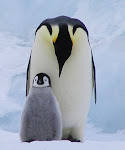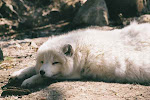Go Green
Welcome to Go Green Girl! I hope you like all the pictures and gadgets and lists I have on my blog. Enjoy reading my posts!
Chiara
 Saker Falcon
Saker Falcon
Scientific Name: Falco Cherrug
Description:
Saker falcons are large birds of prey. They are 8 inches tall. Saker falcons range in color. Some can be dark brown, gray, almost white, and pale brown. Saker falcons have large feet and a large wingspan. They are bigger than peregrine falcons, and they have pointed wings. They have large eyes and a short, pointed beak. Saker falcons are an endangered species. Saker falcons can dive downward at 200 miles per hour.
Ste ppe Biome: Saker falcons live in the Steppe biome. The Steppe biome is dry and cold, and is between a forest and a desert. People are digging for oil and farming in the Steppe biome, so this biome and its animals and plants are endangered. The Steppe biome has really cold winters, and warm summers. The average rainfall is 10 to 30 inches a year.
ppe Biome: Saker falcons live in the Steppe biome. The Steppe biome is dry and cold, and is between a forest and a desert. People are digging for oil and farming in the Steppe biome, so this biome and its animals and plants are endangered. The Steppe biome has really cold winters, and warm summers. The average rainfall is 10 to 30 inches a year.
Habitat:
As we learned earlier, Saker Falcons live in the Steppe biome. They originated in Asia and southeast Europe. They are found in the forest and open plain steppes. They are found in southern Siberia, Mongolia, and the Russian Altai mountains.
Saker falcons migrate to the Middle East and Kazakhstan.
Diet:Saker falcons eat birds, weasels, rats, stoats, voles, Siberian chipmunks, feral pigeons, and ground squirrels. Because of global warming, the Saker falcon's preferred prey, the red-cheeked sousliks, which is a kind of ground squirrel, lost the vegetation they relied on and became extinct. Now, Saker falcon numbers are declining.
Predators:
Saker falcons don't have any natural predators. Their only predator is people. People are destroying their home, and people are the culprits to the extinction of the red-cheeked sousliks.
Babies and Nest: Saker falcons have 2 to 6 eggs. Saker falcons usually don't make their own nest. They usually use nests built by other birds, like storks, ravens, buzzards, or black kite nests. Saker falcons nest on trees and cliffs.
Saker falcons have 2 to 6 eggs. Saker falcons usually don't make their own nest. They usually use nests built by other birds, like storks, ravens, buzzards, or black kite nests. Saker falcons nest on trees and cliffs.
 King Cobras
King Cobras
Scientific Name: Ophiophagus hannah
Description:
The king cobras' skin can be black, olive-green, brown, or tan. Their bellies can be pale yellow or cream. King cobras are fast and agile. The king cobra can lift the front part of its body 3 to 6 feet off the ground! A king cobra has enough venom to kill 20 people, a cow, or a large elephant! King cobras live to
be 20 years old! King cobras grow to be 12 to 15 feet long, and 13.2 pounds. One king cobra was 18.8 feet long! The king cobra is the largest venomous snake. King cobra fangs grow to be half an inch long.
Habitat:
King cobras live in southeast Asia, near swampy areas and rivers, in highland forests. Sadly, the king cobras' home is being destroyed by deforestation.
Behavior:
Like other snakes, king cobras smell with their forked tongue, have a flexible jaw, shed their skin, and swallow their prey whole. King cobras can see 300 feet away! King cobras usually hunt in the day, and are rarely seen hunting at night. A king cobra can strike an animal that is 7 feet away. King cobras are very shy creatures and they would rather run than strike. A group of king cobras is called a quiver.Prey:
Smaller snakes, birds, rodents, frogs, and lizards.
 Predators:
Predators:
Humans, mongooses, and birds of prey.
Babies and nest:
King cobras build nests on the ground. The female king cobra curls around her eggs to keep them warm. The male king cobra does not help care for the babies. It takes 70 to 77 days for the eggs to hatch. A female can have 18 to 50 eggs a year. King cobras mate in January and they build their nests in April. King cobras are the only snakes that guard their eggs until they hatch. A young king cobra's venom is as powerful as a grown king cobra's venom.
Defense:
King cobras sometimes spit in their attackers eyes, which is fatal if the venom gets in the bloodstream. The king cobra spreads out its hood to look bigger and more threatening to its predators.
Fun Facts:
Facts:
*King cobras can make a 'growl' that sounds like a dog.
*A grown king cobra can face a 6 foot human eye to eye.
*King cobras can give a 'dry bite', or a bite without venom, to their victims.
*King cobras sometimes squeeze their prey to death.
*The name 'king cobra' means 'snake eater'.
Animals that live in the southeast Asian rainforests:
Bengal tiger
King cobra
Dawn bat
Wagler's pit viper
Orangutan
Slender loris
Proboscis monkey
Jambu fruit dove
Silvery gibbon
Common palm civet
Red-shanked douc langur
Sumatran Rhinoceros
Until next time,
Chiara
The Green News
Hi! Welcome to the Green News! Every two weeks, check this section for new news. Today's headlines are:
Save The Saker!
Saker falcons are an endangered species.
The Saker falcon's preferred prey became extinct, and now, Saker falcon numbers are declining.
People are trying to save this bird, and its habitat, which is getting destroyed by people farming, and digging for oil.
To learn more about the Saker falcon, go to the post 'The Saker Falcon'.
Go Greener (a.k.a. Chiara).

 ppe Biome: Saker falcons live in the Steppe biome. The Steppe biome is dry and cold, and is between a forest and a desert. People are digging for oil and farming in the Steppe biome, so this biome and its animals and plants are endangered. The Steppe biome has really cold winters, and warm summers. The average rainfall is 10 to 30 inches a year.
ppe Biome: Saker falcons live in the Steppe biome. The Steppe biome is dry and cold, and is between a forest and a desert. People are digging for oil and farming in the Steppe biome, so this biome and its animals and plants are endangered. The Steppe biome has really cold winters, and warm summers. The average rainfall is 10 to 30 inches a year.






.jpg)





